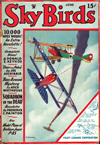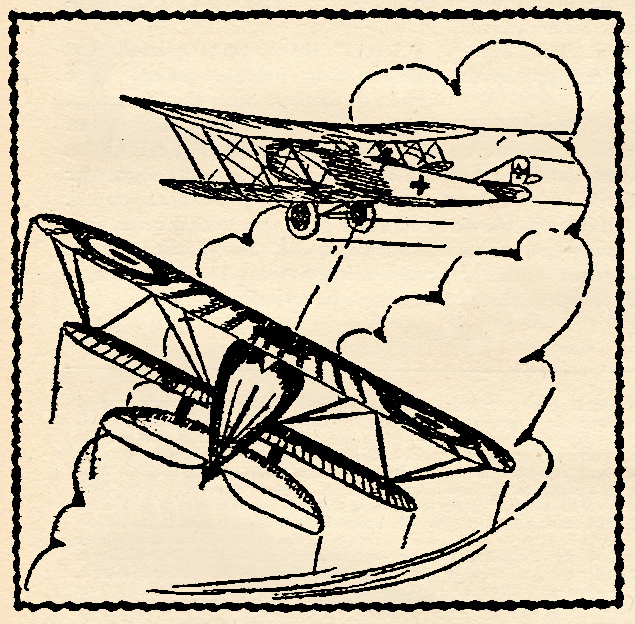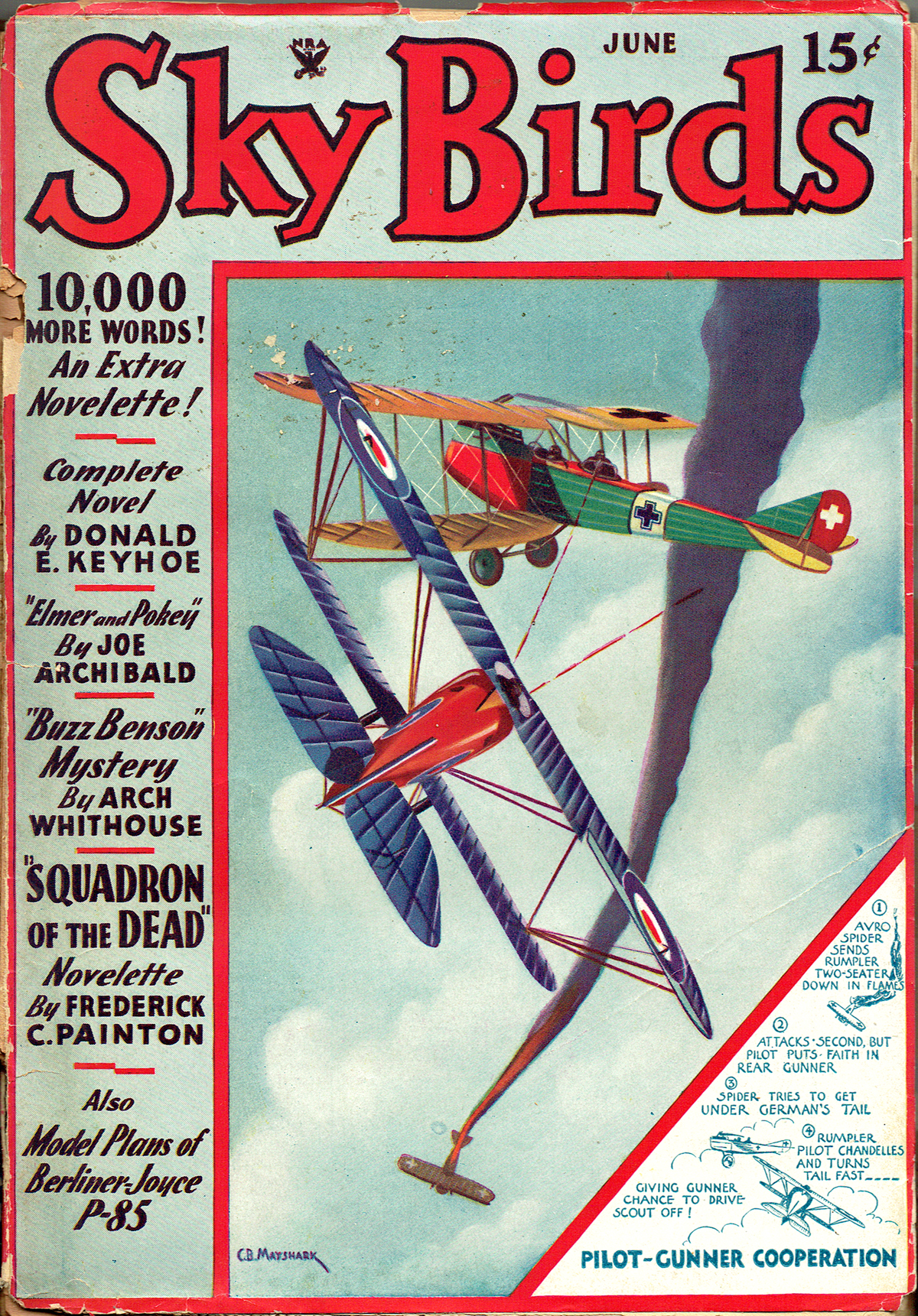“Sky Birds, June 1935″ by C.B. Mayshark
THIS May we are once again celebrating the genius that is C.B. Mayshark! Mayshark took over the covers duties for Sky Birds with the July 1934 and would paint all the remaining covers until it’s last issue in December 1935. At the start of his run, Sky Birds started featuring a different combat maneuver of the war-time pilots. The lower corner presenting a play-by-play of that month’s maneuver with the remainder of the cover illustrating it. For the June 1935 issue Mayshark gives us “Pilot-Gunner Cooperation!”
Combat Maneuvers of War-Time Pilots:
Pilot-Gunner Cooperation
 SPOTTING suckers and crashing them was one of the things that most wartime pilots indulged in. Strictly speaking, a sucker is any enemy aircraft that is sure meat. But occasionally they turned the tables, and then the pilot of the attacking ship would find himself in a jam—sometimes a fatal one.
SPOTTING suckers and crashing them was one of the things that most wartime pilots indulged in. Strictly speaking, a sucker is any enemy aircraft that is sure meat. But occasionally they turned the tables, and then the pilot of the attacking ship would find himself in a jam—sometimes a fatal one.
On this month’s cover, we see an Avro Spider in combat with an enemy two-seater. A few minutes before the scene which we are depicting takes place, the Spider had been winging its way cautiously back to its home tarmac, when suddenly, as it dropped out of a cloud, two German Rumplers were visible. The Spider pilot considered the situation for a moment and then decided to risk it. He ought to be able to bag at least one of those babies and, with good luck, maybe both of them. Rumplers weren’t considered exactly sucker bait, but they ought to be fairly easy for a Spider.

Coming down almost in a vertical dive and spraying lead as it came, the Spider had no trouble in separating the two Huns. As the British pilot thundered between the Germans, he could feel the impact of lead smacking against his fuselage and wings. He’d have to watch himself from now on. At least one of those Jerry ships was carrying a gunner who could do a few things with a machine gun. After pulling out of his dive, the Britisher determined which Hun ship had the good marksman—and decided to go after the other one first.
It was a cinch. The Hun pilot did not even seem to make an effort to shake the Spider off. He was panicky, and his gunner did not have a chance to fire a shot. And so the German two-seater went down a flamer.
The British pilot grinned. The first had been easy enough to warrant trying for the second. The British pilot had his score to think about too. His great ambition was to become an ace, and here was his big chance.
But the remaining German was going to be more trouble than the first one. Every time the British pilot jockeyed for position, he had to retreat. Those two Jerries knew their onions, there was no doubt about that. After practically exhausting his bag of tricks, the British pilot decided to have one more try.
After retreating to the rear of the German machine for a short distance, the Spider suddenly turned. Coming up at the enemy’s tail at terrific speed, the Englishman opened fire, but he wasn’t close enough to do much damage. He was coming within range now, and the Rumpler was still holding its position. What was the matter with these two? They had chased him off before.
Suddenly, however, the Spider pilot found that nothing was wrong with them. Banking sharply and skidding its tail around, the Rumpler suddenly loomed up broadside before the Spider. There was no tail assembly to obstruct the Hun gunner’s fire now, and he opened up with zest. The Spider banked smartly to the right, taking one last pot shot as it did so, and was gone in a flash. The British pilot was lucky, and he knew it. Those two Germans knew how to wage war in the air, and they weren’t taking any monkey business from anybody. Well, he’d be more careful next time, and not be so sure of the so-called suckers.
The Avro Spider was a high-performance single-seater fighter, and one of the best ships of its type put out during the war by the A.V. Roe Co. Its speed was 124 miles per hour and it was powered with a 110-horsepower Le Rhone engine.

Sky Birds, June 1935 by C.B. Mayshark
(Combat Maneuvers of War-Time Pilots: The Story Behind This Month’s Cover)




